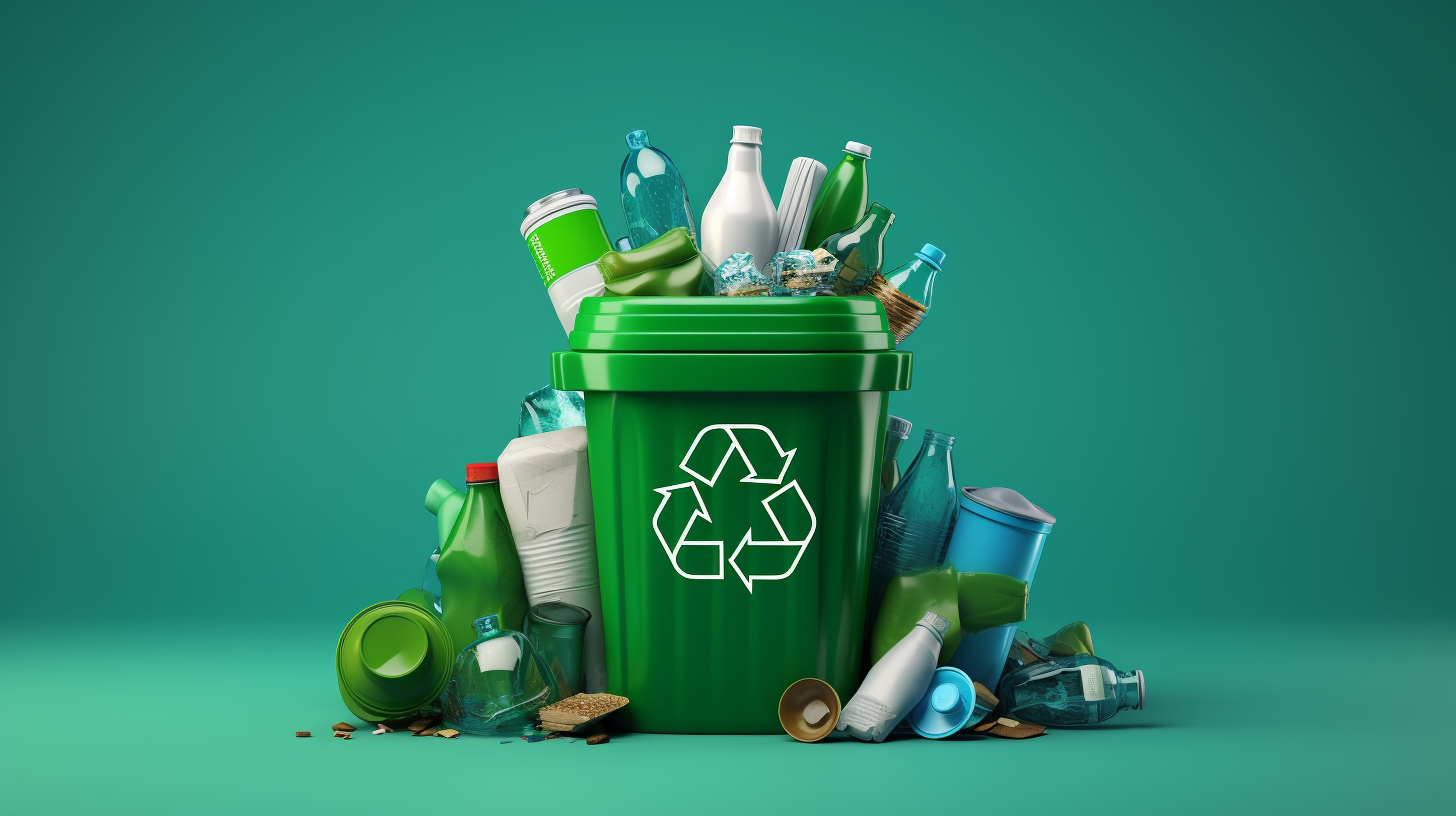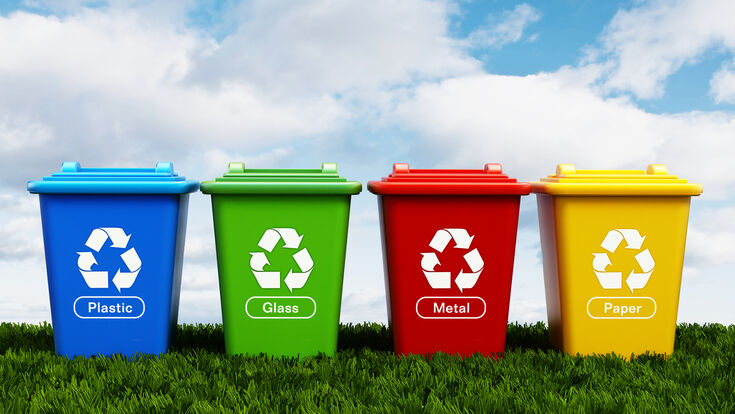Recognizing the Category and Handling of Different Kinds of Waste
Effective waste monitoring is pivotal for environmental sustainability, calling for an extensive understanding of the category and handling of various waste kinds. Household waste, commercial byproducts, hazardous materials, digital refuse, and natural remnants each require distinctive protocols to guarantee security and lessen eco-friendly damages.

Family Waste
Home waste, including a broad selection of disposed of materials created from everyday living tasks, represents a significant element of the total waste stream - recycling lives services. This classification includes natural waste such as food scraps, yard trimmings, and paper items, together with not natural materials like plastics, steels, and glass. The diverse nature of home waste demands effective category and management to alleviate environmental effect and advertise sustainable living methods
Reliable house waste monitoring starts with partition at the resource, assisting in recycling, composting, and safe disposal. Organic waste, for example, can be composted to create nutrient-rich dirt modifications, decreasing landfill worry and improving dirt health and wellness. Recyclable products, including paper, glass, and certain plastics, can be processed and repurposed, minimizing and conserving sources power usage linked with new product production.
Additionally, hazardous family waste such as batteries, digital gadgets, and cleansing chemicals requires specialized managing to avoid dirt and water contamination. Public awareness projects and hassle-free disposal choices play crucial functions in ensuring correct disposal and recycling of these materials. By carrying out robust waste decrease techniques and fostering community participation, towns can considerably reduce the environmental footprint of family waste.
Industrial Waste
Industrial waste, a significant contributor to global waste generation, incorporates a diverse variety of products generated by production, construction, and other industrial activities. This classification includes spin-offs such as scrap steel, plastics, rubber, chemicals, and various other deposits. The make-up and volume of industrial waste can vary substantially relying on the sector and production processes included. Effective monitoring of industrial waste is important for decreasing environmental impact and promoting lasting techniques.
The handling of industrial waste commonly involves numerous processes: collection, disposal, treatment, and partition. Collection systems are made to successfully collect waste materials from numerous resources within an industrial operation. Partition is crucial, as it makes certain recyclable products are divided from non-recyclable ones, which can be guided towards suitable recycling or disposal channels. Therapy procedures, including physical, chemical, and biological approaches, are used to minimize the toxicity, quantity, and environmental influence of the waste. Lastly, disposal approaches like landfilling or incineration are made use of for waste that can not be recycled or dealt with.
Embracing techniques such as waste reduction, resource recuperation, and recycling can significantly lower the problem of industrial waste on the setting, adding to more sustainable commercial techniques.
Hazardous Waste

Corrosive wastes can damage or damage living materials and tissues. Flammable wastes can quickly fire up, posturing fire threats, while reactive wastes can cause explosions or launch toxic gases upon call with other compounds.
Effective contaminated materials monitoring involves several key techniques: recognition and partition of harmful materials, secure transportation and storage space, and appropriate treatment and disposal. Therapy methods might consist of chemical stablizing, neutralization, and incineration. Regulative compliance is necessary, led by frameworks such as the Resource Conservation my latest blog post and Healing Act (RCRA) in the United States, which guarantees risk-free and eco sound management of harmful waste.
Digital Waste
Electronic waste, usually abbreviated as e-waste, represents an expanding challenge in waste monitoring due to the quick obsolescence of technology. This classification incorporates a broad variety of disposed of electronic tools, consisting of mobile phones, computers, tvs, and house devices. The intricacy of e-waste lies in its make-up; these products have a combination of useful materials such as gold and copper, as well as harmful materials like lead, cadmium, and mercury.

Regulations and policies, such as the European Union's Waste Digital and electrical Tools (WEEE) Directive, goal to advertise responsible e-waste monitoring. These policies mandate manufacturers to assist in the collection and recycling of electronic products, thus reducing the concern on garbage dumps and decreasing ecological contamination.
Organic Waste
Organic waste, encompassing eco-friendly materials such as food scraps, backyard trimmings, and agricultural deposits, makes up a significant section of the municipal strong waste stream. This kind of waste is notable not only for its quantity but likewise for its possible ecological impact if not check it out handled correctly. Organic waste can disintegrate anaerobically in landfills, producing methane, a potent greenhouse gas adding to environment modification.
Correct handling of organic waste entails several methods. Additionally, diverting food waste from land fills with donation programs can minimize food instability while minimizing waste.
Municipalities and businesses are progressively acknowledging the relevance of natural waste management. Carrying out extensive natural waste recycling programs not only reduces environmental effects but additionally straightens with more comprehensive sustainability goals, advertising a circular economic situation where sources are consistently recycled and repurposed.
Conclusion
Efficient waste management and ecological security necessitate a thorough understanding of the category and handling of numerous waste types. Implementing appropriate techniques for each waste kind ensures secure and responsible waste administration methods, inevitably adding to the official source security of ecosystems and public health.
Reliable waste monitoring is pivotal for ecological sustainability, requiring a thorough understanding of the category and handling of different waste kinds.Home waste, incorporating a wide selection of discarded materials generated from day-to-day living activities, represents a significant part of the overall waste stream.Industrial waste, a major factor to international waste generation, incorporates a diverse variety of materials generated by production, building, and other industrial tasks (recycling lives services).Harmful waste, a critical problem in waste management, consists of products that posture substantial dangers to human health and the atmosphere due to their toxic, destructive, flammable, or reactive buildings.Organic waste, including naturally degradable products such as food scraps, yard trimmings, and agricultural residues, makes up a significant section of the municipal strong waste stream